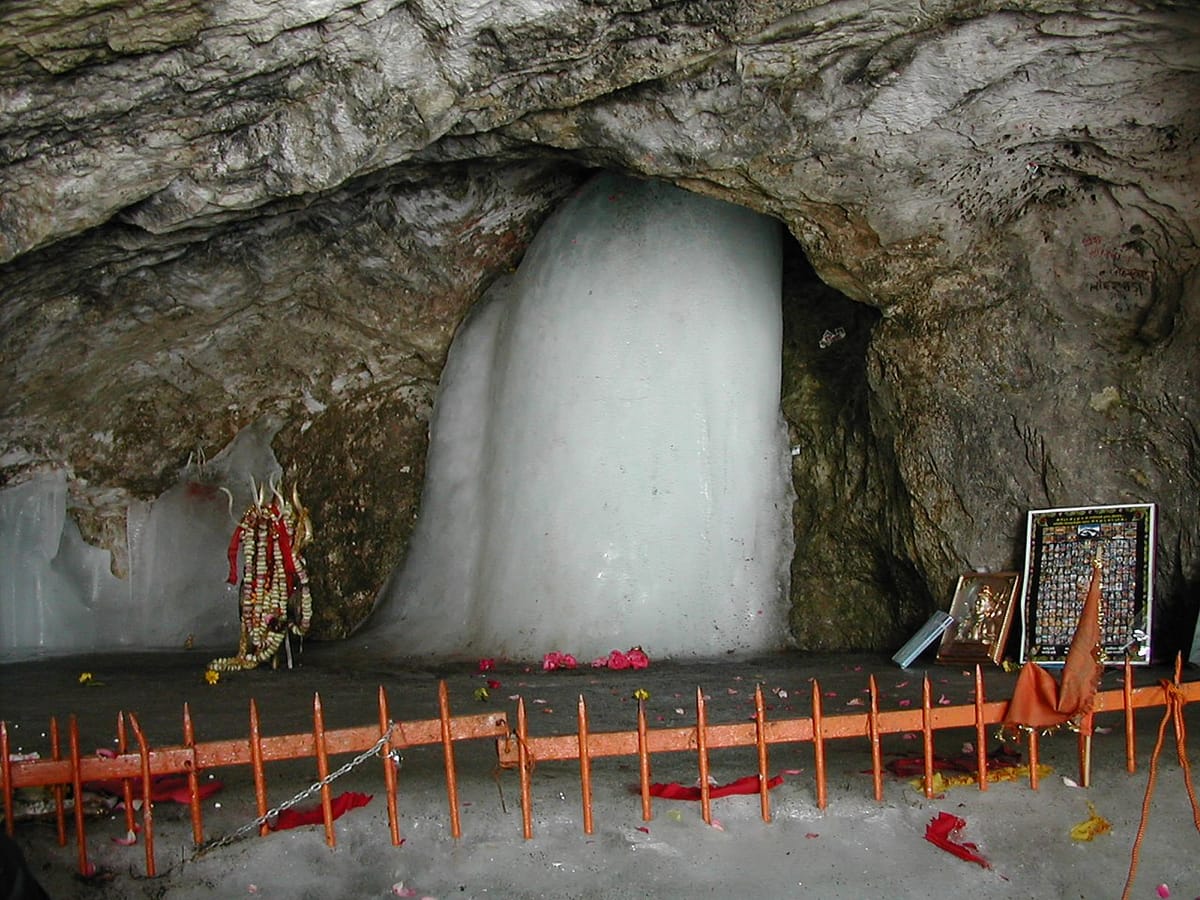Embarking on the Amarnath Yatra: A Journey of Faith and Devotion

The Amarnath Yatra is one of the most revered and challenging pilgrimages in India, drawing thousands of devotees from across the globe every year. Located in the picturesque and rugged terrain of the Himalayas in Jammu and Kashmir, the Amarnath Cave is believed to be the abode of Lord Shiva. The journey to this sacred site is not only a testament to one's faith but also an adventure through some of the most breathtaking landscapes in the world.
The Sacred Amarnath Cave
The Amarnath Cave, situated at an altitude of 3,888 meters (12,756 feet), houses an ice stalagmite that is worshipped as the Shiva Linga. This natural formation is considered to represent Lord Shiva, and its size varies with the phases of the moon, waxing and waning over the course of the month.
Historical and Mythological Significance
- Ancient Legends: According to Hindu mythology, it is believed that Lord Shiva chose this cave to reveal the secrets of immortality and creation to his consort, Goddess Parvati. This makes the cave one of the holiest shrines for devotees of Lord Shiva.
- Discovery: The cave was rediscovered by a shepherd named Buta Malik in the 15th century, and since then, it has been a prominent pilgrimage destination.
The Journey: Routes to Amarnath
The pilgrimage to Amarnath can be undertaken via two main routes, each offering its unique set of challenges and scenic vistas.
Traditional Route: Pahalgam to Amarnath
- Distance: Approximately 48 kilometers
- Stages: The trek begins from Pahalgam and progresses through Chandanwari, Pissu Top, Sheshnag, and Panchtarni before reaching the Amarnath Cave.
- Highlights: This route is known for its beautiful landscapes, including lush meadows, pristine lakes, and majestic mountain peaks. The Sheshnag Lake and the Mahagunas Pass are notable highlights.
Shorter Route: Baltal to Amarnath
- Distance: Approximately 14 kilometers
- Stages: Starting from Baltal, the route goes directly to the Amarnath Cave, making it a shorter but steeper trek.
- Highlights: This route is preferred by those looking for a quicker journey, often completing the trek in a single day. The steep ascent provides a more challenging experience.
Preparations and Essentials
Given the high altitude and challenging terrain, proper preparation is crucial for a successful and safe Amarnath Yatra.
Physical Preparation
- Fitness: Pilgrims are advised to start preparing at least a month in advance, focusing on cardiovascular exercises, strength training, and endurance building to cope with the strenuous trek.
- Medical Check-Up: A health check-up is mandatory to ensure that participants are fit for the journey, given the high altitude and low oxygen levels.
Packing Essentials
- Clothing: Warm and layered clothing is essential due to the cold weather, especially at night. Waterproof jackets and sturdy trekking boots are also necessary.
- Gear: A good quality backpack, walking stick, and personal medical kit are important. Other essentials include a torch, sunscreen, and water bottles.
- Permits and Registration: Obtaining the necessary permits and completing the registration process is mandatory. This ensures that the authorities can monitor and assist pilgrims as needed.
Spiritual and Cultural Experience
The Amarnath Yatra is not just a physical journey but also a deeply spiritual and cultural experience.
Rituals and Prayers
- Ice Lingam Darshan: The primary objective of the pilgrimage is to have a darshan (viewing) of the sacred ice lingam in the cave, which is accompanied by chants and prayers.
- Temple Rituals: Various rituals and ceremonies are conducted throughout the pilgrimage, adding to the spiritual ambiance.
Community and Camaraderie
- Langars: Along the route, numerous community kitchens (langars) are set up by various organizations and individuals, offering free food to the pilgrims. These langars symbolize the spirit of service and community.
- Shared Journey: The yatra fosters a sense of camaraderie among the pilgrims, as they share the challenges and joys of the journey together.
Safety and Environmental Concerns
Given the fragile ecosystem of the Himalayas and the challenges posed by high-altitude trekking, safety and environmental conservation are paramount.
Safety Measures
- Acclimatization: Adequate time should be taken to acclimatize to the high altitude to prevent altitude sickness.
- Emergency Services: The authorities provide medical facilities, rescue operations, and information centers along the route to assist pilgrims in case of emergencies.
Environmental Responsibility
- Cleanliness: Pilgrims are urged to maintain the sanctity and cleanliness of the environment by disposing of waste responsibly and minimizing their ecological footprint.
- Respect for Nature: The natural beauty of the Himalayas is an integral part of the pilgrimage, and efforts should be made to preserve it for future generations.
Conclusion
The Amarnath Yatra is a profound journey that tests physical endurance and reaffirms spiritual faith. As you traverse the challenging paths, the stunning landscapes and the deep sense of spirituality make the journey truly transformative. Whether you are drawn by religious devotion or the allure of the Himalayas, the Amarnath Yatra offers an experience that is both humbling and elevating. Prepare well, respect the environment, and embark on this sacred pilgrimage to find not just the divine ice lingam, but perhaps a deeper connection with yourself and the universe.



